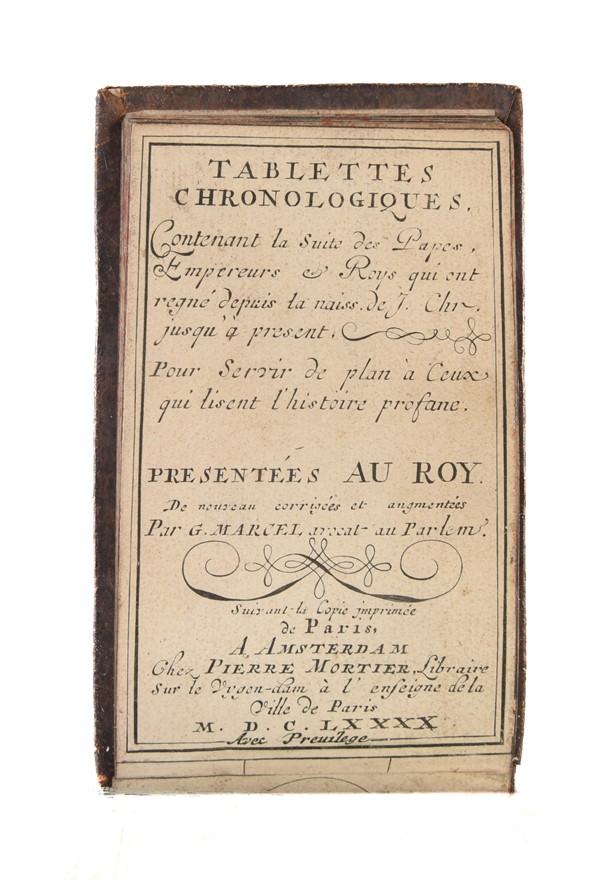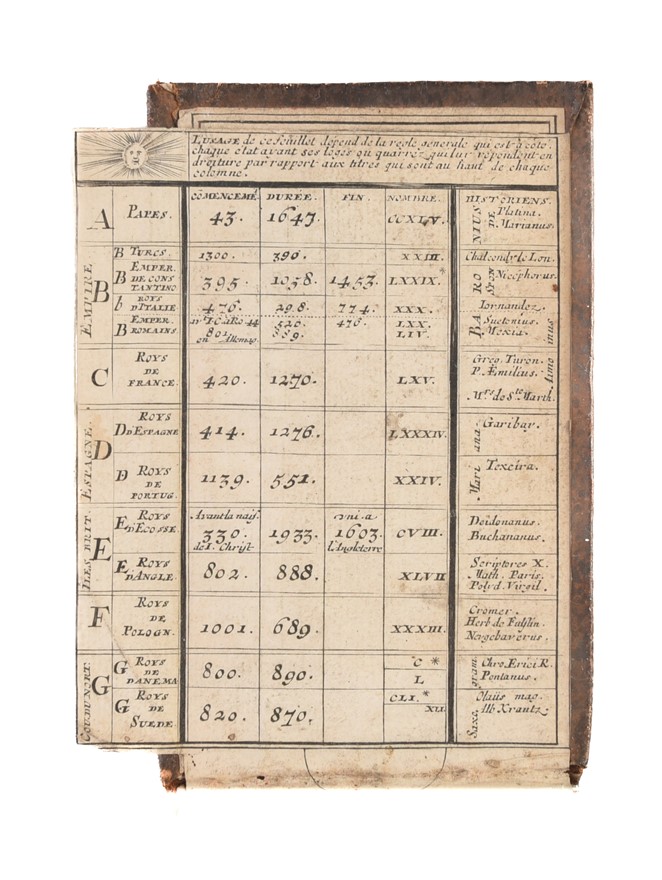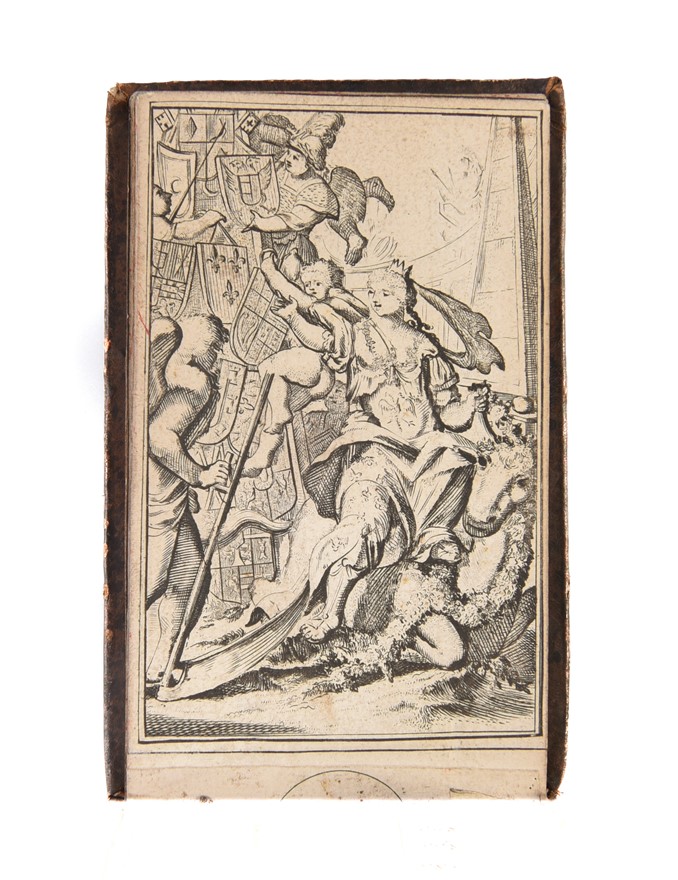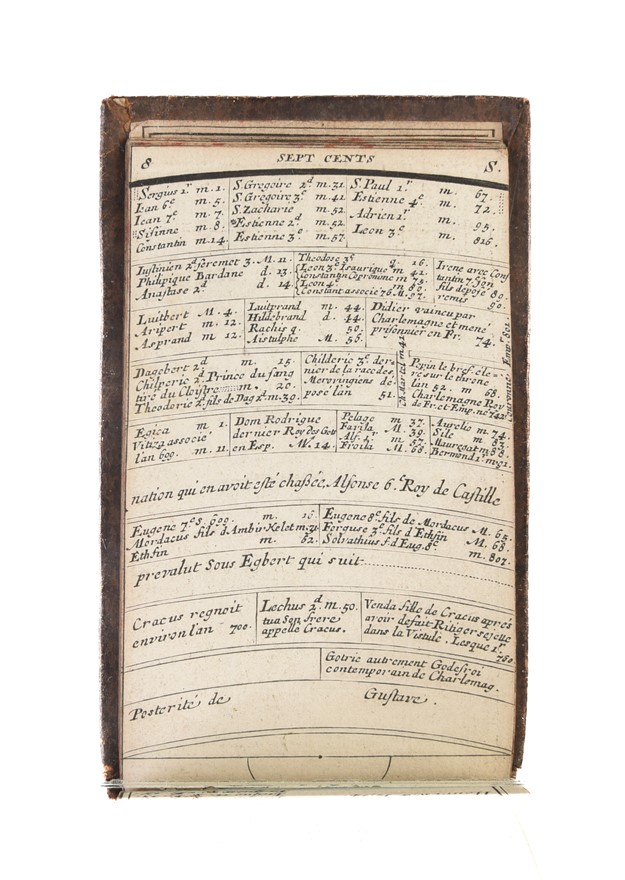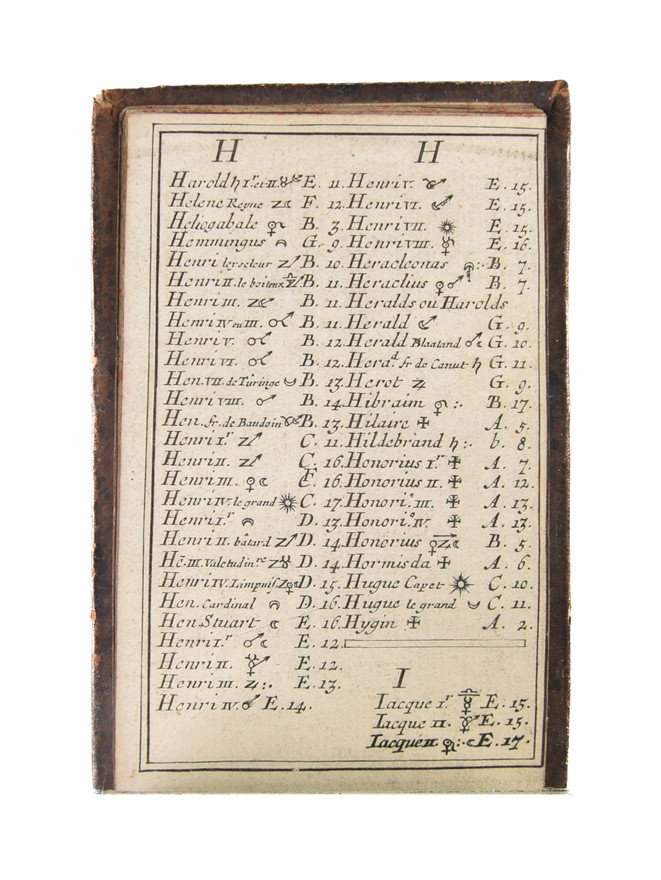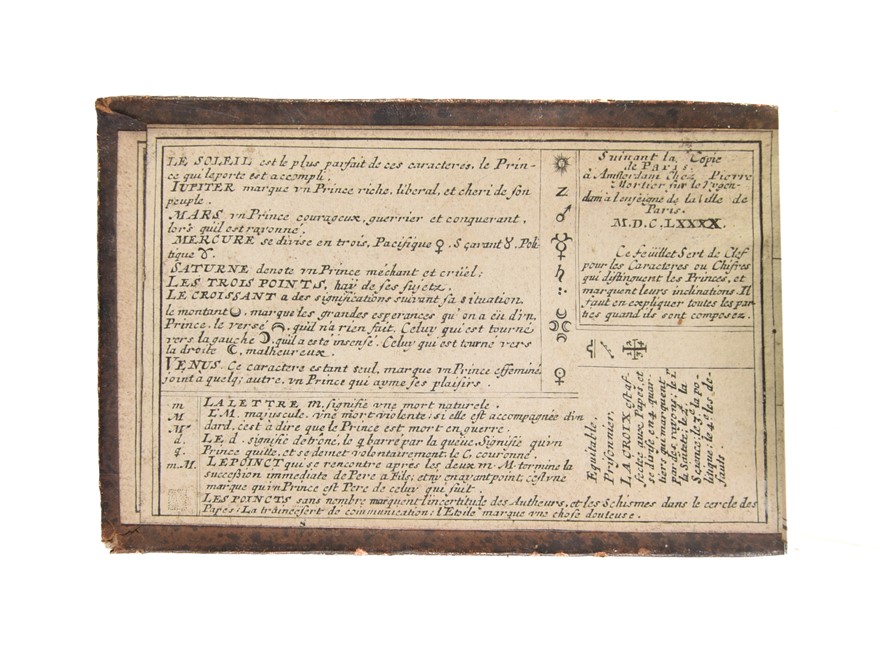Tablettes Chronologiques.
MARCEL Guillaume (1690.)
£950.00
All leaves engraved.
Oblong 24mo (102 x 65mm). [5 (of which 3 printed on recto only)], 17, [2 (printed on verso only)]ff., [2] engraved tables on front and rear paste-downs, rear folding. Contemporary calf, spine with simple gilt roll, edges gilt (extremities scuffed).
Amsterdam: Pierre Mortier,
A handsome little chronology of popes and kings, entirely engraved throughout. It may be small but the scope of this pocket-sized volume is mighty, comprising an exhaustive chronology of popes, monarchs and emperors from the birth of Christ to the present day, and covering the Ottoman and Roman empires, and the kingdoms of France, Spain, Portugal, Scotland, England, Poland and Germany.
Naval commissioner, historian, and lawyer Guillaume Marcel (1647-1708) gives exhaustive instructions for use at the end of the volume. Say I wanted to find out about Francois I, he writes, everything from his dates, to his death, his life and interests, I would look in the alphabetical list of names, (the continuous index found on the verso of each leaf) and see the code next to his name, 'C.16.' 'C' indicates the row in the chronological table (on the rectos) allocated to kings of France (the foldout guide on the rear pastedown provides a useful guide); the '16' refers to the leaf number and corresponding century. All of the symbols and characters following Francois' name can be decoded using the detailed key found on the front pastedown ('m' signifies a natural death; 'M' a violent one, and so on).
The arresting layout of the work speaks to innovations in information presentation and engraving techniques taking place in the seventeenth century. 'In contrast to the type-dominated chronology books of the fifteenth and sixteenth centuries, seventeenth-century chronologies relied heavily on fine engraving, which enabled greater and greater feats of data compression, a more fluid mixture of image and text, and nearly unlimited variations in script, layout and proportion...during the late seventeenth century some chronographies grew; others shrank. Fine engraving techniques made tiny fonts practical, and by the 1680s the French writer Guillaume Marcel was publishing political and ecclesiastical chronologies in pocket size. Marcel's model was copied across Europe' (Rosenberg & Grafton, Cartographies of Time, 99-100), as the title page of the present volume confirms, printed in Amsterdam after Marcel.
Rosenberg & Grafton, Cartographies of Time (2010), pp.99-100.
Stock Code: 246258
